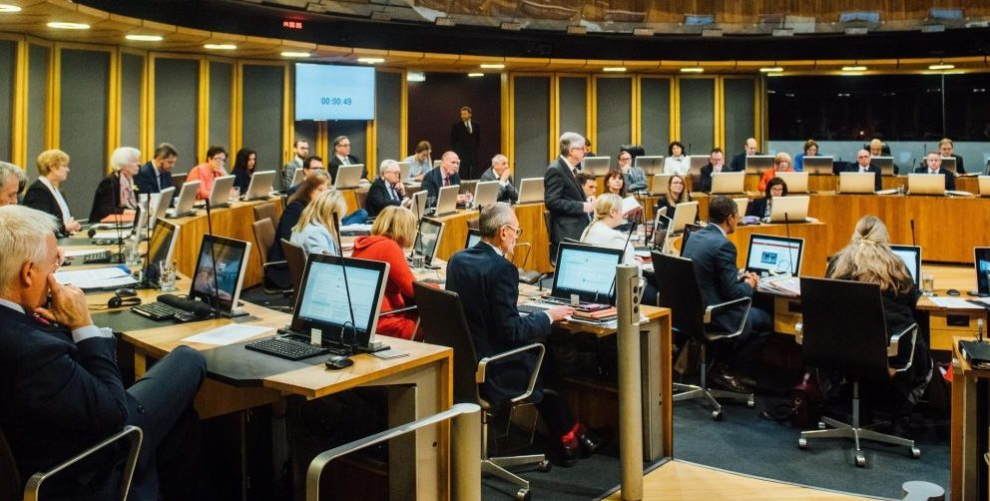A HUGE new constituency stretching from the Llŷn Peninsula on the west coast to the Welsh border with England is among the proposals set to reshape the Senedd election in 2026. This comes as part of a broader reform that will see the Welsh Parliament grow to 96 Members of the Senedd (MSs) from the current 60, with a new voting system and a drastic redrawing of the electoral map.
The changes, outlined by the Democracy and Boundary Commission Cymru, follow a mandate to create 16 new, larger constituencies by merging the existing 32 Westminster seats. This reconfiguration will lead to the creation of vast constituencies, some covering nearly 2,000 square miles, as well as smaller, more densely populated urban areas.
The new electoral map represents a profound departure from the existing structure, with the 16 proposed constituencies representing a doubling up of the recently redrawn Westminster boundaries. This approach was adopted to meet the tight timeline ahead of the next Senedd election in 2026, avoiding the need to draft entirely new boundaries from scratch. Each of these new constituencies will elect six MSs through a party-list proportional representation system, replacing the current mixed system of first-past-the-post and regional lists.
The largest proposed constituency, Dwyfor Meirionnydd, Montgomeryshire, and Glyndŵr, will span a vast area of 1,927 square miles, stretching from the Llŷn Peninsula in the west to the border with England, and encompassing parts of Gwynedd and Powys. This will be a significant change for the residents of these areas, who will see their representation in the Senedd combined across a broad and diverse geographic area.

In contrast, urban areas such as Cardiff East and North will be more compact, reflecting the higher population density in these regions. The smallest of the proposed constituencies, Cardiff East and North, will cover just a fraction of the area of its rural counterparts, yet will still elect the same number of MSs.

The Boundary Commission’s proposals are not yet set in stone. A public consultation is currently underway, running until 30 September 2024, allowing residents and stakeholders to have their say on the new boundaries. The commission has emphasised that it has taken into account factors such as transport links, local ties, shared history, and the Welsh language in drawing up the proposals, aiming to create constituencies that feel as natural and representative as possible.
The proposals are expected to be revised in December 2024, with the final boundaries to be confirmed by March 2025. However, these changes are intended to be temporary, with plans for a more comprehensive review of the boundaries before the subsequent election in 2030. This future review is expected to allow for more flexibility in creating constituencies that better reflect the changing demographics and political landscape of Wales.
The expansion of the Senedd and the introduction of the new voting system are the culmination of years of debate and planning, spearheaded by former First Minister Mark Drakeford and ex-Plaid Cymru leader Adam Price. The reforms aim to address long-standing concerns that the current size of the Senedd is insufficient to effectively scrutinise the Welsh Government, given its growing responsibilities since devolution.
While Welsh Labour and Plaid Cymru have supported the expansion, the Welsh Conservatives have voiced strong opposition, citing the increased cost of an additional £18 million per year on top of the Senedd’s existing £67 million annual budget. The new system’s reliance on closed party lists, where voters choose a party rather than individual candidates, has also sparked concerns about the potential erosion of the connection between voters and their elected representatives.
Professor Laura McAllister, an expert in Welsh politics, has warned that the closed lists system could concentrate too much power in the hands of political parties, potentially undermining public trust. Critics fear that this could weaken the bond between constituents and their MSs, as voters would no longer have the option to vote for a specific individual who best represents their interests.
As Wales prepares for the 2026 Senedd election, the changes to the electoral map and the expansion of the Welsh Parliament represent a significant moment in the evolution of Welsh democracy. The introduction of a more proportional voting system is intended to better reflect the will of the electorate, but it also brings with it challenges in terms of representation and voter engagement.
One of the most significant tests for the new system will be voter turnout. Historically, turnout in Senedd elections has been relatively low, with the 2021 election seeing a turnout of just 46.6%. Whether the changes will inspire greater engagement or lead to further voter apathy remains to be seen.
The final shape of Wales’ political map for 2026 is still in flux, and the coming months will be crucial in determining how these changes will impact the future of Welsh politics. With the commission urging the public to participate in the consultation process, the voices of Welsh voters will play a key role in shaping the new constituencies that will define the next chapter of the Senedd.













